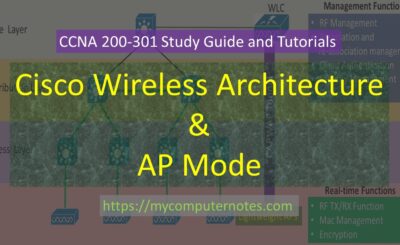In this section, let us explain what is network topology and its different types.
What is a Network Topology
The computer network consists of two or more network components such as a workstation, router, network switch, gateway, modem, etc. connected together by means of transmission cables.
The network topology defines the structural arrangement of these network components how they are interconnected with each other.
In other words, the network topology may be defined as the schematic layout of transmission cables connecting various network devices and nodes in a network.
The network topology can be of two types:
- Physical topology
- Logical topology
Physical Topology
Physical topology describes the physical connectivity of the transmission cables.
Logical Topology
Logical topology defines how data moves across the nodes using different network protocols.
Different types of topology
- Bus topology
- Ring topology
- Star topology
- Mesh topology
- Hybrid topology
Bus Topology

- In a bus topology, entire nodes are connected through a single cable called the backbone.
- Each node is connected to the main backbone cable either directly or through a drop cable.
- The minimum length of cable is used in this topology.
- Terminators are connected at both the open ends of the backbone. Terminators are used for absorbing the signal so that it will not be reflected back to the cable.
- This topology is easy to implement.
- The biggest disadvantage is that when the backbone cable breaks down, the entire networks get affected.
Ring Topology

- All the nodes are connected through a single cable and both the ends of the cable are joined together to form a ring-like structure.
- In-ring topology, data flows in a single direction.
- It uses token passing to transmit data from one node to another in a ring.
- A token is passed from one node to another through the entire ring. Only the node that holds the token can transmit the data to the destination node. The token is then released when the data is received by the destination node.
- Token ring is easy to implement and economically cost-effective.
Star topology

- Star topology is the most popular and commonly used network in LAN.
- All the nodes are connected to the central hub, called concentrator.
- The hub is a multi-port device and all the nodes are connected to its different ports.
- Star topology is more fault-tolerant and reliable as compared to the bus and star topology.
- The maximum length of cable is required to connect all the nodes to the hub separately. Hence installation cost is more.
- The fault in a single node does not affect the entire node, hence troubleshooting is easy.
- But, the entire network goes down, when the hub becomes faulty.
- Star topology is mostly used in Ethernet LAN with twist pair cable and optical fibre cable.
Mesh topology

- In a mesh topology, all the nodes are connected to each other with a maximum redundant path.
- Each node has multiple links to transmit its data to the destination node.
- The number of cables required to connect nodes is decided by the formula: n(n-1)/2 where n is the number of nodes in a network.
- Fault tolerance is very high since multiple redundant paths are available to transmit data.
- Mostly, mesh topology is implemented in a WAN environment where link failure is a major issue.
- The Internet is the best example of mesh topology.
- Installation is very costly because a huge number of cables required to connect all nodes with multiple links.
- Mesh topology network is difficult to troubleshoot and manage.
Hybrid topology

-
- When two or more different topologies are combined to form a single network, then it is called hybrid topology.
- A hybrid topology is complex in nature, as it is a mixture of different topologies.
- This topology is flexible since different topology is implemented where it is needed and works more effectively.
- It is more reliable and scalable.
- The network infrastructure is very costly because expensive network devices are implemented for protocol translation used by different topologies.
| ← Prev | Next → | |
| TCP/IP Protocol Suite | Peer to Peer & Client-Server Architecture |





